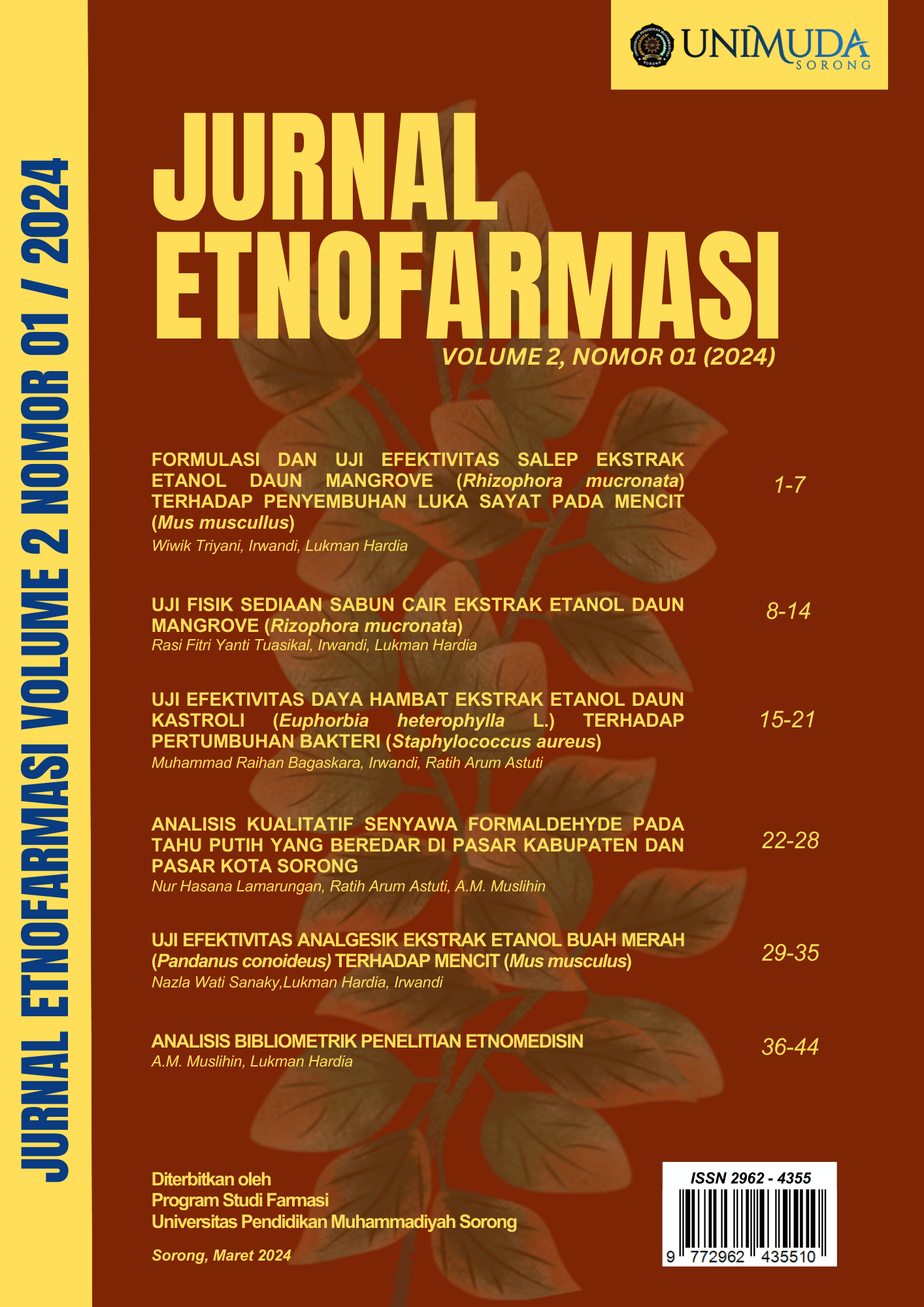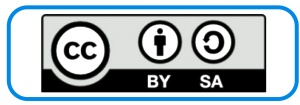UJI EFEKTIVITAS ANALGESIK EKSTRAK ETANOL BUAH MERAH (Pandanus conoideus) TERHADAP MENCIT (Mus musculus)
Abstract
Many traditional plants have analgesic activity and can be used as alternative therapy. One plant that can be used for analgesic activity is Buah Merah (P. conoideus). Red fruit (Pandanus conoideus) is a medicinal plant that is well known and has proven its efficacy. The results of the phytochemical screening of red fruit, contained several active compounds, namely: tannins, flavonoids, saponins and alkaloids. The aim of this research is to determine the effectiveness of red fruit (P. conoideus) ethanol extract in providing an analgesic effect on mice (Mus musculus). This research used an analgesic meter and male mice as experimental animals. Each group was given treatment, the positive control group was given paracetamol, dose group 1 was given
suspension with a concentration of 10%, dose 2 was given suspension with a concentration of 20% and dose group 3 was given 30% suspension then left for 30 minutes then placed on an analgesic meter until the mice writhe, then observe the response that appears. The response of mice from each group was observed for 30, 60, 90 and 120 minutes. The results of the one-way anova test showed that there was an influence and significant differences between the treatment groups. The results show that the ethanol extract of red fruit (P. conoideus) has an analgesic effect on mice (Mus musculus) and a concentration of 20% has the most effective analgesic activity.
Downloads
Copyright (c) 2024 Nazla Wati Sanaky

This work is licensed under a Creative Commons Attribution 4.0 International License.








